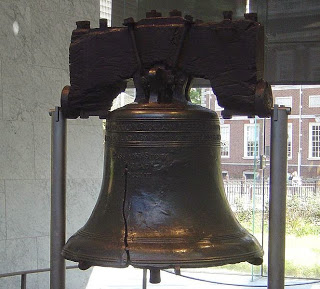 The weekly collection of useless and fun facts. In this week’s edition: Drugged Rubber Bands, Famous Bells’ Cracks, The Furby Spy, The Fastest Internet Connection, and Missile Mail.
The weekly collection of useless and fun facts. In this week’s edition: Drugged Rubber Bands, Famous Bells’ Cracks, The Furby Spy, The Fastest Internet Connection, and Missile Mail.
 The drug trade in the 1980’s was, to put it mildly, lucrative, and no one one made more money than the Colombian drug lord, Pablo Escobar. His organization was bringing in such large amounts of cash that they had to spend $2,500 a month on rubber bands just to hold it from the drug trade. The amount of money spent and gained during this period was astronomical. In 1982, Escobar was making $3 billion and was the richest man in Colombia. There was so much cash coming from the U.S. that the cartel bought a Learjet just to fly the profits out, with each bundle being secured with those aforementioned rubber bands. Even losses due to water damage, or being eaten by rats, added up to $500 million per year. This was all but a blip compared to the money the cartel was making on the cocaine trade. The cartel continued on for the entire decade until it finally ended when Escobar was gunned down in 1993 by Columbian police on a rooftop of an apartment where he was hiding. Source
The drug trade in the 1980’s was, to put it mildly, lucrative, and no one one made more money than the Colombian drug lord, Pablo Escobar. His organization was bringing in such large amounts of cash that they had to spend $2,500 a month on rubber bands just to hold it from the drug trade. The amount of money spent and gained during this period was astronomical. In 1982, Escobar was making $3 billion and was the richest man in Colombia. There was so much cash coming from the U.S. that the cartel bought a Learjet just to fly the profits out, with each bundle being secured with those aforementioned rubber bands. Even losses due to water damage, or being eaten by rats, added up to $500 million per year. This was all but a blip compared to the money the cartel was making on the cocaine trade. The cartel continued on for the entire decade until it finally ended when Escobar was gunned down in 1993 by Columbian police on a rooftop of an apartment where he was hiding. Source
 Two of the most famous bells in history had the same problem. The Liberty Bell and Big Ben were cast by the same bell foundry and both bells cracked. Both bells were cast at London’s Whitechapel Bell Foundry which was established in 1570 and continues to operate today. It is the oldest continuous business in Great Britain.
Two of the most famous bells in history had the same problem. The Liberty Bell and Big Ben were cast by the same bell foundry and both bells cracked. Both bells were cast at London’s Whitechapel Bell Foundry which was established in 1570 and continues to operate today. It is the oldest continuous business in Great Britain.
The Liberty Bell was originally for the Pennsylvania Provincial Assembly in 1751. They paid 100 pounds for it, and it arrived in 1752. It cracked on the first test strike and had to be recast twice. It wasn’t known as the Liberty Bell until the 1830’s, and there is much debate about how the crack we know today really happened. The most widely held view it seems, is that the bell met its last ring to commemorate Washington’s birthday in 1846. A crack had developed prior to this time which had been repaired, but it cracked again. It wasn’t rung again.
Big Ben, in London, which refers to the bell and not the tower like many believe, was cast at the Whitechapel foundry in 1856. This bell also cracked before it was ever installed in the tower. It was broken up and recast and had its first ring in July of 1859. But it lasted only a few months before it cracked again. The blame seemed to fall on what was striking the bell, however. The hammer installed to strike the bell was believed to be too heavy, and it resulted in the cracking of the bell. Unlike the Liberty Bell, Big Ben was repaired and the hammer strike was modified. The bell was turned a quarter so the hammer would strike a different area and was replaced with a lighter version, and to prevent the crack from growing, a small square was cut into the bell. Big Ben has been ringing ever since. Maybe it’s just a requirement that every famous bell has to have a crack. (See also The Great, Great Britain Quiz for more Great Britain facts) Source, Source
 Furbies were the robotic toys released in 1998 that became a big hit. 14 million were sold in 1999 alone. But they had a dark side; they were deemed to be a potential national security threat. At the National Security Agency’s Maryland headquarters in 1999, the toys were banned from entry since it was feared the toys might repeat national security secrets because they had, “built-in recorders,” according to the NSA policy. The problem was, Furbies had no built-in recorder, but the agency hadn’t asked the company if they did. The poor Furby was even banned from commercial air flights during take-offs and landings in the fear their electronics would interfere with the plane’s instruments. Who could have known something so fuzzy could be so evil? Source\
Furbies were the robotic toys released in 1998 that became a big hit. 14 million were sold in 1999 alone. But they had a dark side; they were deemed to be a potential national security threat. At the National Security Agency’s Maryland headquarters in 1999, the toys were banned from entry since it was feared the toys might repeat national security secrets because they had, “built-in recorders,” according to the NSA policy. The problem was, Furbies had no built-in recorder, but the agency hadn’t asked the company if they did. The poor Furby was even banned from commercial air flights during take-offs and landings in the fear their electronics would interfere with the plane’s instruments. Who could have known something so fuzzy could be so evil? Source\
 What would you do if you had an internet connection like this? A 75-year-old Swedish woman named Sigbritt Lothberg has the world’s fastest Internet connection at 40 gigabits per second. It was made available to her by her son, Peter Lothberg, a Swedish networking and optical internet expert, who wanted to show that connections could be low priced and have high capacity. With these speeds, Sigbritt was able to download a full HD movie in two seconds and could watch 1,500 HDTV channels at once if she chose. Interestingly, Sigbritt had never even had a computer until she got the high-speed connection from her son.
What would you do if you had an internet connection like this? A 75-year-old Swedish woman named Sigbritt Lothberg has the world’s fastest Internet connection at 40 gigabits per second. It was made available to her by her son, Peter Lothberg, a Swedish networking and optical internet expert, who wanted to show that connections could be low priced and have high capacity. With these speeds, Sigbritt was able to download a full HD movie in two seconds and could watch 1,500 HDTV channels at once if she chose. Interestingly, Sigbritt had never even had a computer until she got the high-speed connection from her son.
These speeds are out of the ballpark compared with the average speed in the U.S., which is 10 megabits per second. Even the fastest network available, which is Verizon’s FIOS network, only has speeds up to 150 megabits per second. But in 2011, researchers eclipsed even Sigbritt’s blazing speed when they were able to sustain a connection of 186 gigabits per second at the SuperComputing Conferece in Seattle. That is the equivalent of downloading 100,000 Blu-ray discs in one day. Source, Source
 The postal service has always been thought of as slow in its delivery, but there was one time, and one idea, that would challenged that notion. In 1959, the USPS successfully delivered mail in a cruise missile and sent 3,000 pieces of mail over 100 miles in 22 minutes.
The postal service has always been thought of as slow in its delivery, but there was one time, and one idea, that would challenged that notion. In 1959, the USPS successfully delivered mail in a cruise missile and sent 3,000 pieces of mail over 100 miles in 22 minutes.
On June 8, 1959, a Regulus I missile was fired from the USS Barbero, a U.S. Navy submarine off the coast of Florida. The missile held two containers of mail that were addressed to President Eisenhower, Vice President Nixon, members of congress, and many other government officials and personnel. Each was an identical letter from the Postmaster General that announced the event that was to take place. The missile landed successfully at the Naval Auxiliary Air Station at Mayport, Florida over 100 miles away, 22 minutes later. While the event showed that delivering the mail was possible by missile, it was more a show of the capability and accuracy of the U.S. military during the Cold War since the space that held the letters was actually designed to hold a nuclear warhead. Source
That’s it for another edition. Until next time, use these facts to annoy those around you with your new found knowledge. Feel free to comment below and share.
Past Issues of the Completely Random Facts of the Week

